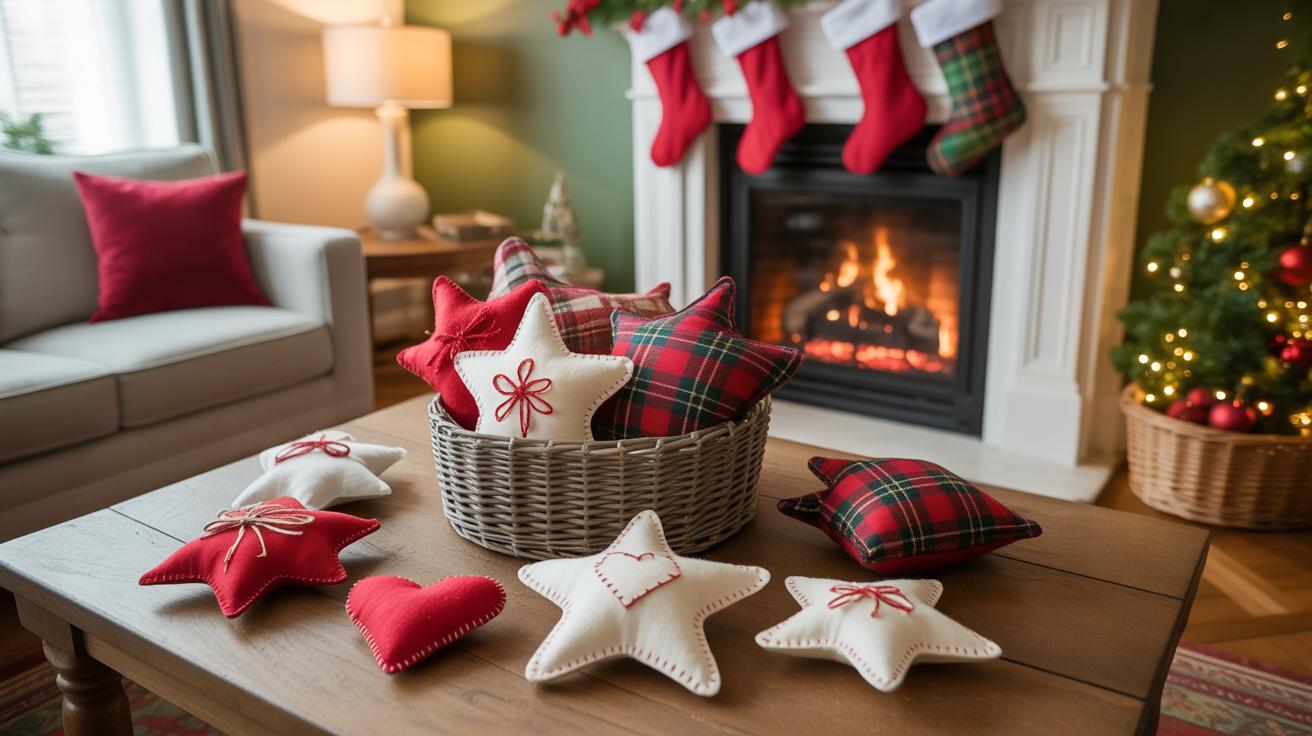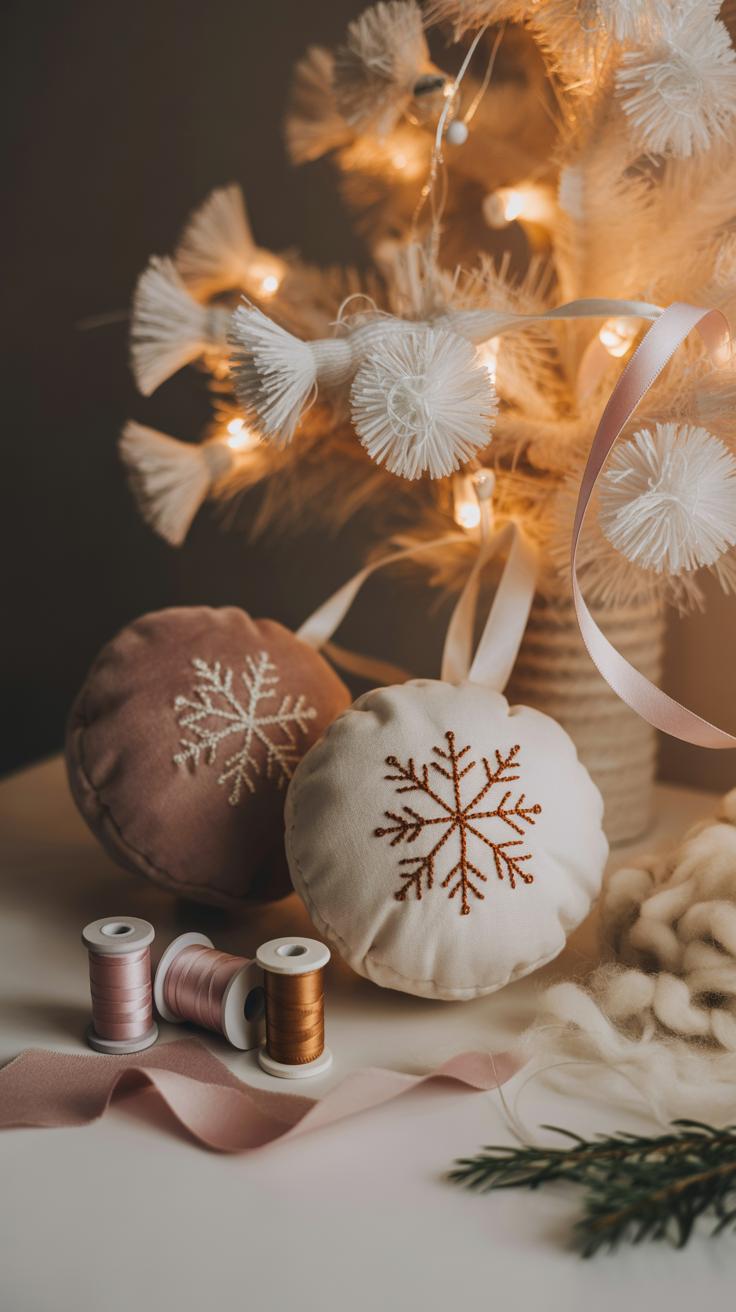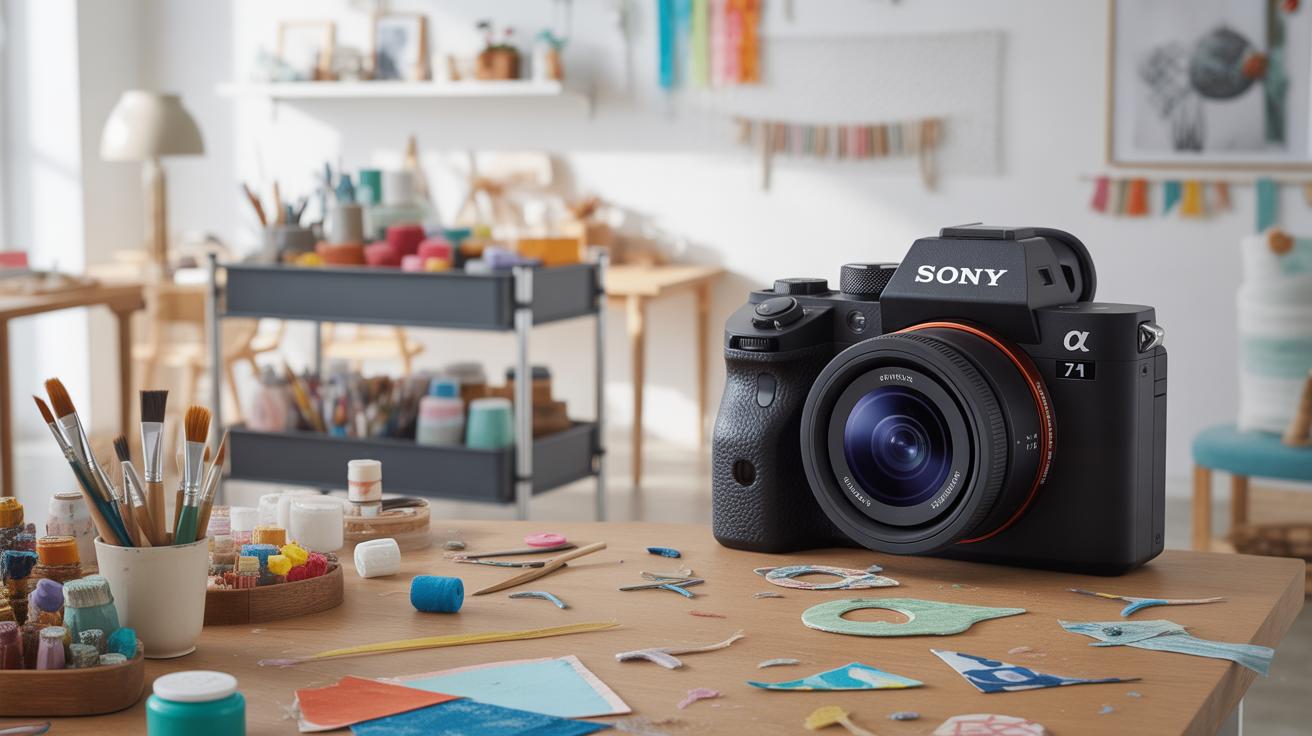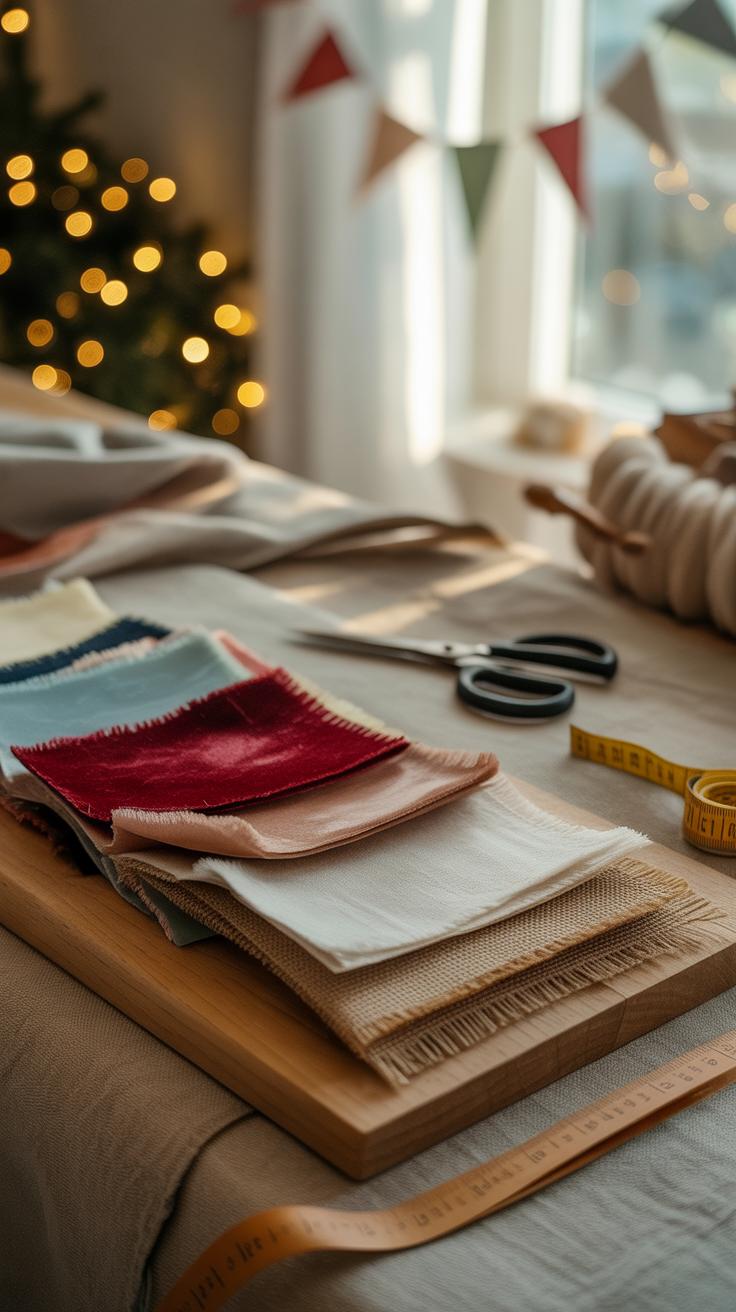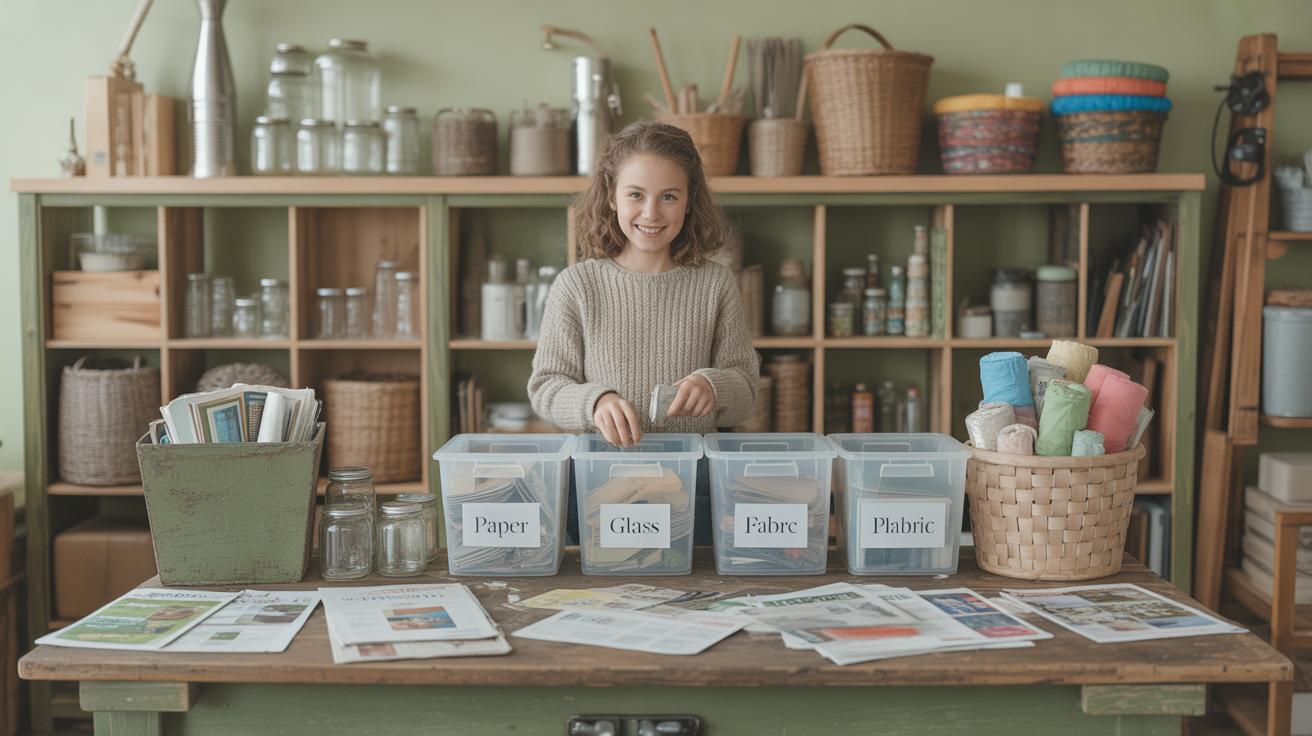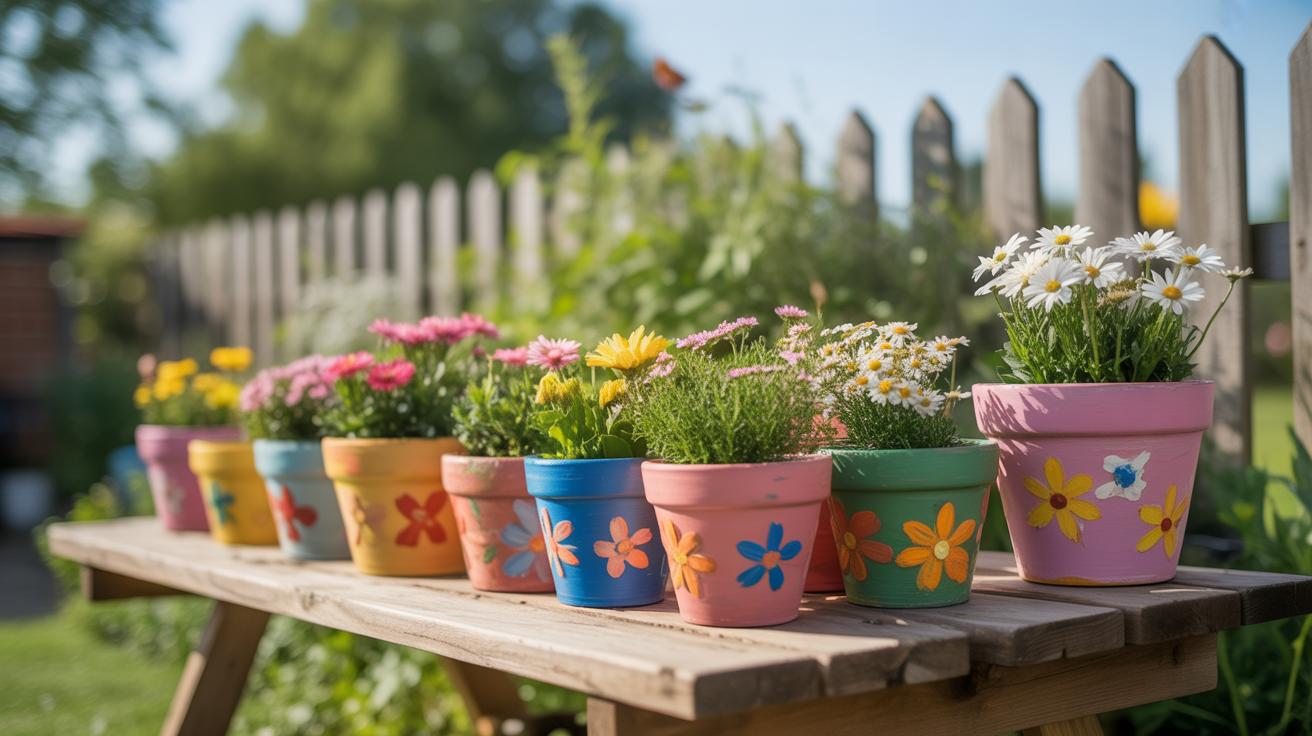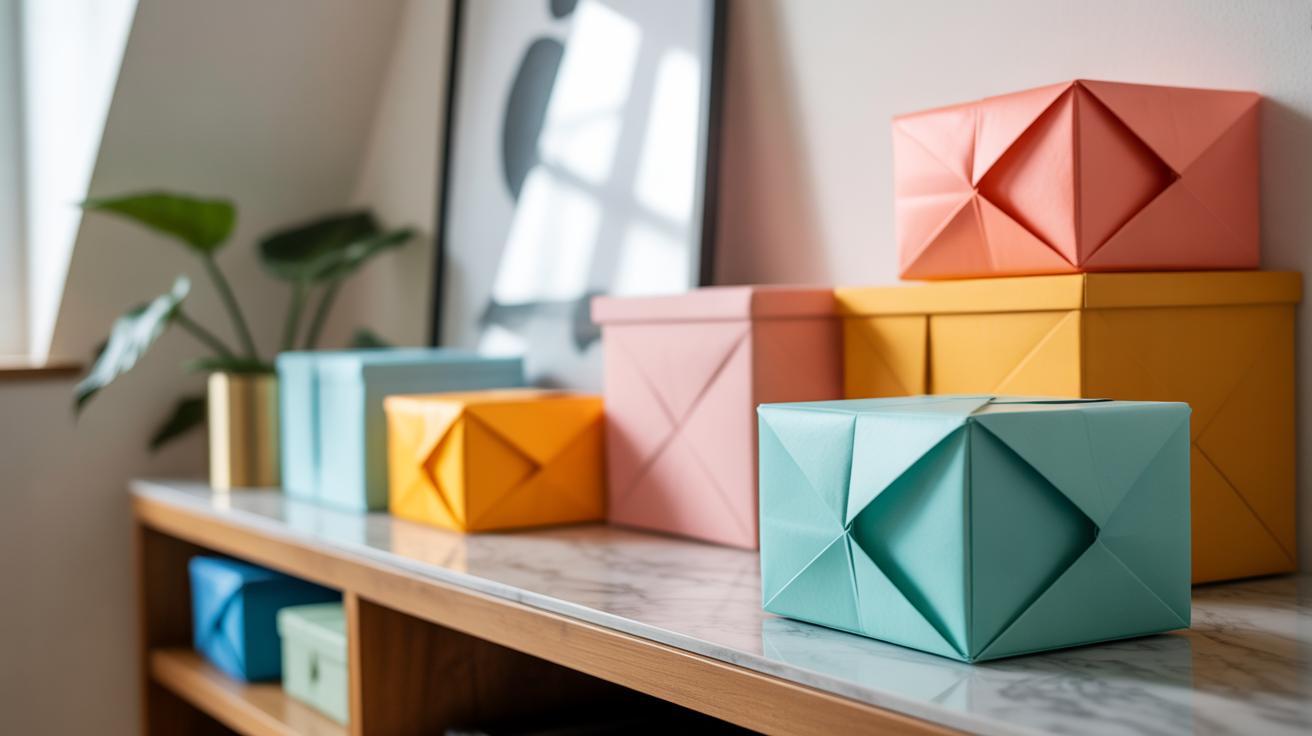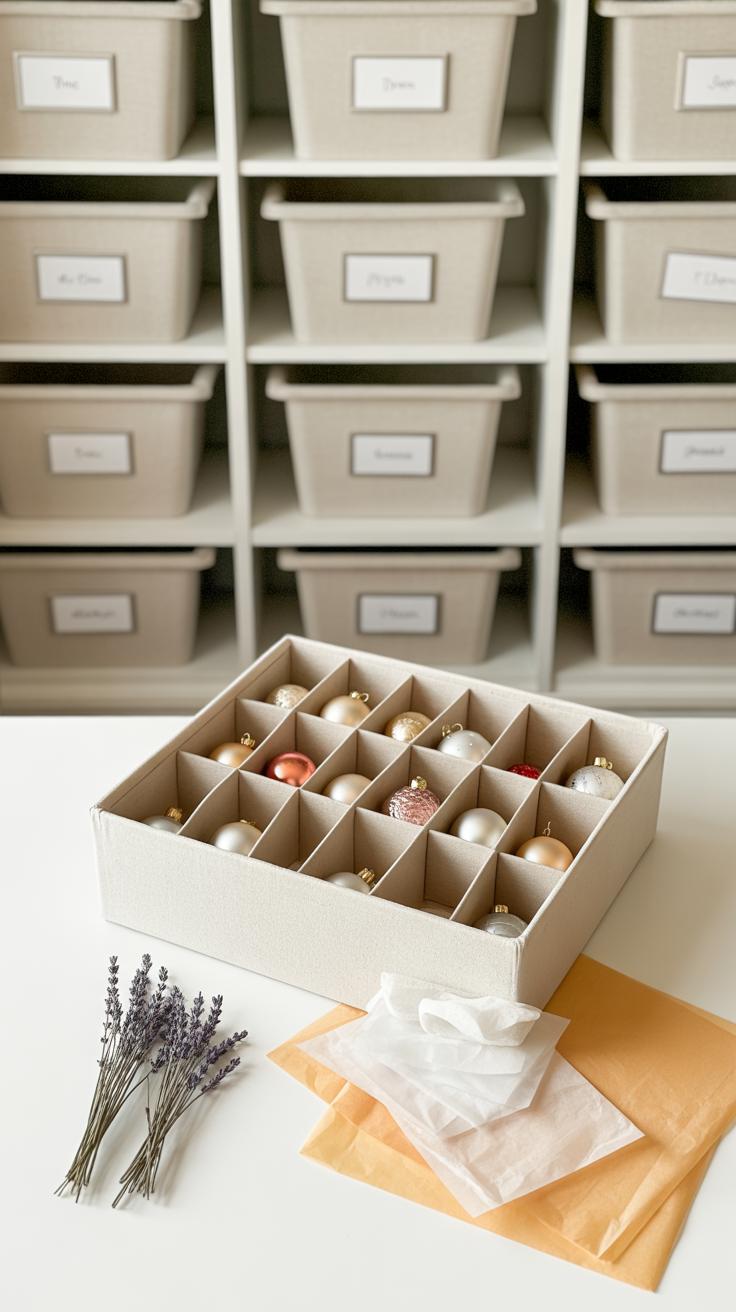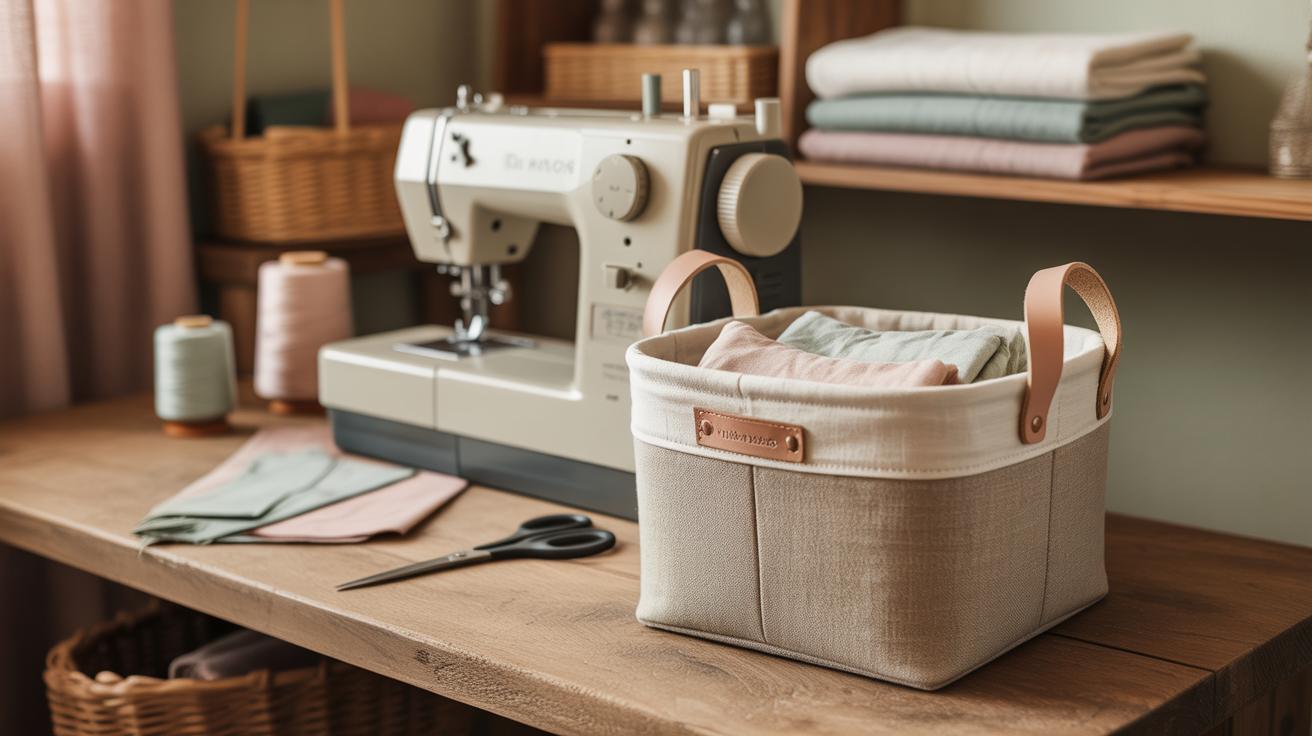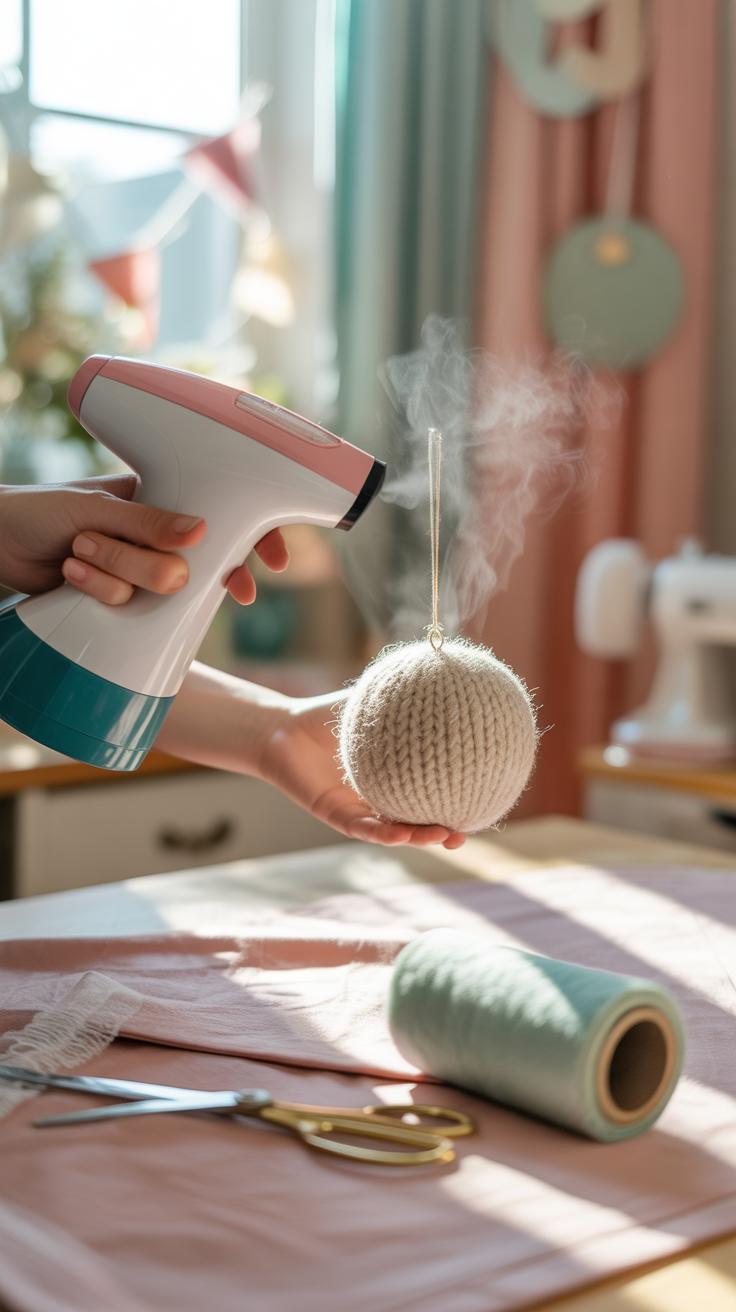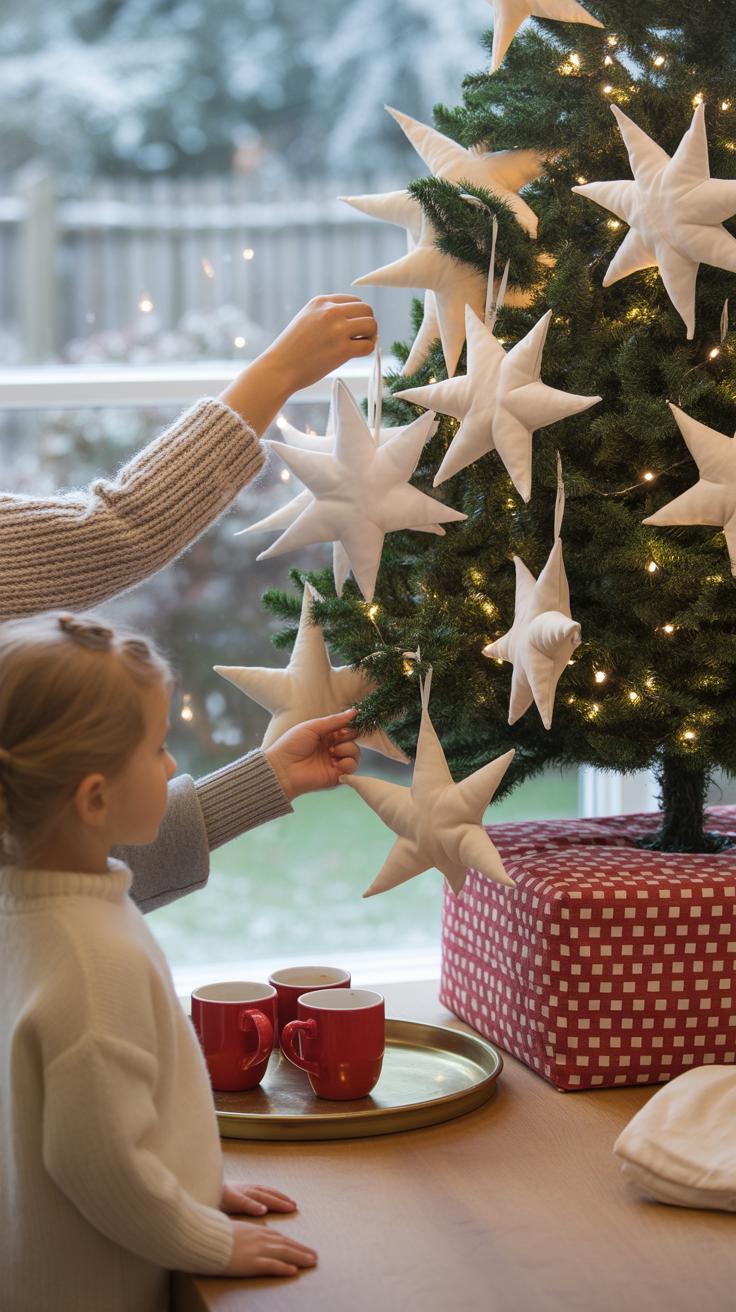Introduction
Handmade Christmas ornaments are sentimental favorites cherished year after year. These miniature crafts are the perfect solution for quilters, offering a quick sewing fix that increases the likelihood of completion during the busy holiday season. Techniques focus on scaled-down designs, including miniature pieced quilt blocks (such as flying geese trees), or simple ornaments created from forgiving mediums like felt. Many projects are sized to fit neatly within 3-inch embroidery hoops, showcasing hand stitching or felt appliqué.
The appeal of these handcrafted items extends beyond personal use, as they function perfectly as gifts for friends or neighbors. The tradition of holiday decoration is mirrored globally in sophisticated artisan crafts. For instance, the town of Tlalpujahua in Michoacán, Mexico, is famous for Christmas ornaments blown from glass and hand-painted. Ukraine also safeguards heritage practices, recognizing the creation of straw didukh decorations and spherical Christmas stars. Historically, even items from popular culture, such as the bestselling book The Prayer of Jabez, inspired authorized merchandise including Christmas ornaments.
Benefits of Fabric Christmas Ornaments
Fabric Christmas ornaments provide significant practical benefits for crafters, particularly those seeking a quick and satisfying holiday project. These projects, especially those for quilters, are designed to come together quickly, increasing the likelihood that they will actually get finished during the busy Christmas season. Utilizing fabric scraps and simple designs means that any combination of red and green prints will suffice, making them excellent projects for managing material inventory. Moreover, non-woven materials like felt are highly recommended as they are “so forgiving and easy to work with”. This medium is also “really simple for young kids to help with,” acting as a good confidence booster for those new to sewing.
A key benefit of fabric ornaments is their sentimental and functional double duty. Handcrafted ornaments consistently become “sentimental favorites” on the tree, valued and cherished year after year. They serve readily as “great gifts for friends or neighbors”. The nature of these crafts allows for high personalization, such as creating a custom felt house ornament to represent a favorite current or past home, or making mini quilt blocks that function as decorative gift tags. The materials are flexible enough to accommodate various methods, including no-sew options like Scandinavian Folded Stars made with fabric or fabric-wrapped spheres.
Finally, fiber-based ornaments hold a place in both commercial appeal and traditional folk customs globally. The popularity of the category is evidenced by its use in mass-market merchandising, such as the authorized Christmas ornaments created for the bestselling book The Prayer of Jabez. In international heritage, materials like straw and husks are used to create seasonal symbols. For instance, in Ukraine, Christmas decorations made by plaiting straw—such as the didukh (wheat sheaf) and pavuk (spider-shaped object hung from the ceiling)—are traditionally believed to bring a good harvest in the upcoming year. Historically, in Latvia, fabric stars were even sewn onto quilts used in horse-drawn open sleighs for Epiphany celebrations.
Why Choose Fabric Over Other Materials
When you compare fabric ornaments with glass or plastic ones, several aspects stand out—especially safety and feel. Fabric is soft and pliable, so it won’t cause cuts or break if handled roughly. That actually makes them pretty child-friendly; you can let children help decorate without watching every move closely. I’ve noticed that kids are less intimidated by fabric ornaments—they like touching and squeezing them, which adds a layer of interaction missing from hard, fragile decorations.
These ornaments are also lightweight, which might be easily overlooked but is worth thinking about. Heavy ornaments sometimes pull branches down or require sturdy hooks, but fabric ones perch lightly and securely. You won’t hear that jarring noise of falling glass ornaments either, which, trust me, can disrupt the whole room’s mood.
Long-term Use and Sustainability
Fabric ornaments present an opportunity to rethink holiday decorating in a more sustainable way. Since they last longer, you avoid frequent replacement—meaning less clutter and waste. If you’re environmentally conscious, this is a plus. Even better, many fabric ornaments can be made from recycled fabrics, like old clothes or scrap materials. This not only keeps things out of the landfill but also adds a special, personal touch to your decorations.
In fact, making your own ornaments from leftover fabric bits can become a yearly tradition, which subtly encourages reuse over new consumption. The fabric’s durability means they’ll come back looking just as nice each holiday season. That raises an interesting question: why not start integrating more handmade, fabric-based decorations into your holiday routine—and see how that changes your experience over time?
Selecting the Best Fabrics for Ornaments
Choosing the right fabric for your Christmas ornaments can make a big difference—not just in how they look, but how long they last. Think about texture first. Soft fabrics like velvet give a rich, cozy feel, but they might attract dust and require careful storage. On the other hand, cotton is sturdier and breathes better, which helps prevent mold or mildew if you store ornaments in less-than-ideal conditions.
Durability plays a role, too. Felt is a popular choice because it doesn’t fray at the edges and holds its shape well, making it easier to work with and less prone to damage over time. I once had velvet ornaments that faded after a few years, so fabric quality matters a lot.
Common Fabric Choices
Some fabrics tend to appear again and again in fabric ornament making, and for good reasons:
- Cotton: Lightweight, breathable, and available in countless prints and colors. It’s easy to sew but can wrinkle or shrink if not cared for properly.
- Felt: Thick, soft, and forgiving—it doesn’t fray and is great for shapes that need structure. Felt ornaments often feel handmade and charming.
- Velvet: Luxurious and plush, adds depth and warmth to your tree. But it can show wear more quickly and usually needs gentle handling.
You might wonder if stretchier fabrics could work, but they tend to lose shape, so I’d be cautious with those.
Fabric Longevity and Care
Fabrics that breathe and resist moisture will hold up better long term. Look for tightly woven textiles that won’t easily snag or pull. Also, think about how you’ll store these ornaments after the holidays—some fabrics need to be kept away from direct sunlight or high humidity to avoid fading or mildew.
Before choosing, test a small piece by folding or scrunching it, then giving it a gentle pull. Does it bounce back, or is it permanently creased? Fabrics with some resilience usually cope better with storage and handling year after year.
One trick I’ve found helpful is to pre-wash cotton fabrics to avoid shrinking later. Felt and velvet usually don’t need washing, but you might want to keep moth repellents nearby if you store them in a drawer or box for months.
DIY Fabric Ornament Ideas
Making your own fabric Christmas ornaments can feel surprisingly manageable, even if you’re not much of a crafter. Start with simple shapes—think stars, hearts, or candy canes. These forms aren’t just classic; they’re forgiving for first-timers. You can draw your own shapes or find free templates online to trace onto your fabric. Patterns don’t have to be perfect—slight quirks add character, really.
Once you’ve cut out your shapes, sewing them together is straightforward. If you don’t sew, fabric glue or hot glue can hold pieces securely, though sewing tends to make your ornament last longer. Try stuffing the ornaments lightly with cotton or scrap fabric for some dimension, or leave them flat for a simpler look.
Embellishments bring your ornaments to life. Buttons and beads can add texture and shine, but ribbons might be your easiest way to introduce color and movement. For those interested in something a bit more personal, simple embroidery stitches can highlight edges or create subtle patterns. Don’t hesitate to mix and match—sometimes a bead here and a small patch of embroidery there really surprises you by how charming it looks.
You could stick to one type of ornament or make a whole variety. Which would you prefer? That makes the process more fun than tedious, I think. And while precision helps, a handmade ornament’s small imperfections make it special. After all, isn’t that what holiday decorations should be about?
Buying Quality Fabric Ornaments
When you’re browsing for fabric Christmas ornaments, either in stores or online, a few details can tell you if an ornament is truly well made. Sturdy stitching stands out immediately—loose threads or uneven seams often mean it won’t hold up beyond this holiday season. I’ve seen some lovely-looking ornaments fall apart after just one year because the stitching wasn’t quite right.
Another thing to check is the fabric itself. Colorfast materials are key; you wouldn’t want your ornaments fading or bleeding color onto your tree or hands. Sometimes the fabric looks soft but might not have been treated to resist stains or fading.
Finally, pay attention to the hanger or loop. It should feel secure, without flimsy threads or weak attachments. A solid hanger ensures your ornament stays put and doesn’t drop unexpectedly, which can be frustrating.
What to Look for in Store-Bought Ornaments
When examining ornaments in person, these signs of quality help:
- Even, tight stitching on all sides
- Fabric that feels durable, not flimsy or overly thin
- Colorfastness—test by gently rubbing with a damp cloth if possible
- Secure, well-attached hangers or loops
- Consistent filling or stuffing, without lumps or bare spots
In my (somewhat picky) experience, ornaments that check these boxes tend to last longer and look better year after year. They also feel a bit… more thoughtful, if that makes sense.
Supporting Local Artisans
Buying from local makers or craft fairs can be worth considering beyond just quality. Local artisans often use unique patterns or materials you can’t find mass-produced. Plus, there’s a connection in knowing who made the ornament. It feels more personal.
At a recent craft fair, I found ornaments that clearly had small imperfections but also character—like an uneven stitch here or a slight color variation there. Those quirks made the ornament feel alive, handmade rather than factory churned.
Supporting local also means you’re encouraging creativity in your community, which might be something you care about even if you’re unsure. This choice sometimes carries a bit more meaning than just “buying decoration.”
Creative Display Ideas for Fabric Ornaments
Fabric Christmas ornaments don’t have to sit solely on your tree. They can find life in many surprising places around your home. For instance, try attaching them to garlands draped over a mantel or stair railing. The contrast between soft fabric and twinkling lights adds a warm touch. I once placed a few felt stars along a greenery garland on my bookshelf – it changed the whole room’s vibe.
Wreaths are another excellent spot. Pin or sew your fabric ornaments right into the greenery, mixing shapes and colors. It feels a bit more personal than a bare, traditional wreath. Plus, you can bring out ornaments you wouldn’t hang on a tree, like small stuffed animals or patched hearts.
Tabletop displays let you play with height and texture. Arrange fabric ornaments in bowls or scatter them across trays with candles and pinecones. This invites closer inspection and creates cozy, layered decor. It’s almost like a mini holiday vignette. Don’t be afraid to combine different fabric styles, like velvet with linen or wool, to keep things interesting.
When mixing textures and styles, think about pairing soft fabric with glossy items such as glass baubles or even metallic accents. The interplay makes each piece stand out more. Twinkling fairy lights tucked among fabric decorations and fresh greenery also pull everything together. It’s a subtle way to brighten corners without overwhelming your space.
Have you ever tried hanging a few fabric ornaments on kitchen cabinet knobs or drawer handles? It adds a quiet festive note in unexpected rooms. You might find your holiday spirit spread slowly, room by room. It’s a gentle reminder that Christmas touches don’t need to compete for attention—they can just quietly coexist.
Proper Storage Techniques for Fabric Ornaments
Storing fabric Christmas ornaments takes a bit of thought, especially if you want to keep them looking nice year after year. You might think tossing them in a box is enough, but fabric is tricky—it can crease, fade, or even grow mold if conditions aren’t right. So, how do you keep them fresh and ready?
Choosing the Right Containers
Picking the right container matters more than you might expect. Breathable boxes or fabric bags often work best since they allow air flow, reducing moisture buildup. Plastic bins with dividers can also be useful, especially if you’re really careful about avoiding condensation and separating each ornament to prevent crushing.
- Breathable fabric bags stop ornaments from suffocating.
- Boxes with compartments help keep shapes intact, avoiding squishing.
- Clear plastic bins make finding things easier but watch for trapped humidity.
It’s tempting to cram everything together, but try not to do this—you’ll risk misshaping delicate pieces. Some people swear by wrapping ornaments loosely in tissue paper, though I’ve found cotton sheets work just as well and less sticky.
Preventing Damage During Storage
Keeping fabric ornaments dry is crucial. Dampness invites mold and mildew. You might want to tuck silica gel packets or even chalk bags inside storage containers to absorb moisture. Keep ornaments away from direct sunlight or harsh warmth, which can fade colors and weaken fibers over time. A cool, dark space—like a closet or under the bed—usually does the trick.
- Store in cool, dry areas away from heat sources.
- Use moisture absorbers to keep humidity low, especially if you live in humid climates.
- Avoid overcrowding to maintain the shape of stuffed or padded ornaments.
What sometimes puzzles me is how fragile some fabric can feel after a season or two of storage—even when I thought I took every precaution. Maybe a quick regular check-in on your ornaments helps catch any early signs of damage before it’s too late.
Caring for Your Fabric Ornaments
Fabric Christmas ornaments are delicate little treasures that need gentle care to stay beautiful year after year. You might think that cleaning them is tricky, but with a bit of caution, it’s doable without damage. The key is to know what kind of fabric you’re dealing with—cotton, felt, velvet, or something else—and choose the right approach.
Cleaning Methods for Different Fabrics
Spot cleaning works well for most fabric ornaments. A damp cloth with mild soap can lift stains without soaking the whole ornament. If your ornament is made from stronger, washable fabric, hand washing in cool water is an option—but you need to be very gentle to avoid stretching or ruining any embroidery or glued-on parts.
Lint rollers are surprisingly effective for removing dust or loose fibers, especially on fuzzy fabrics like felt or velvet. I’ve always been a bit cautious with water on delicate pieces, so sticking to dry cleaning with a lint roller has saved some favorites in my collection.
Repairing and Refreshing Ornaments
Ornaments might get loose threads or decorations that start to fall off after years in storage. Keeping a small sewing kit handy helps—just a couple of stitches can hold things together nicely. Sometimes, a bit of fabric glue works better, especially for attaching beads or small decorations. Just don’t glob it on; less is more here.
You might find an ornament looking shabby but still with potential. Refluffing stuffing inside can bring back shape, or trimming away frayed edges makes it seem almost like new again. It’s worth pausing before tossing something out. Are you sure it’s beyond a small fix? Sometimes, fixing also feels like a way to revisit old memories connected to these ornaments.
Incorporating Fabric Ornaments into Holiday Traditions
Fabric ornaments hold a special place beyond just decoration—they can weave into your family’s holiday rituals in ways that feel meaningful and personal. There’s something about crafting or exchanging these soft, handmade pieces that gives the season a slower, more thoughtful rhythm. Maybe it’s the tactile feeling of fabric in your hands or the memory tied to each stitch, but these ornaments tend to carry stories.
Making Ornaments Together
Gathering around a table with fabric scraps and simple tools can turn into a cherished event. Involving kids or relatives in this process isn’t just about making decorations; it’s about making memories. Even if the shapes aren’t perfect or the stitching slips, those little imperfections speak volumes. It’s worth trying to set aside an afternoon or two where you all sit down, chat, and create ornaments. Later, years down the line, you might find yourself looking back at those handmade pieces and smiling—recalling not just the craft, but the conversations and laughter that happened alongside.
Personalized Gifts and Keepsakes
Fabric ornaments also make for thoughtful, lasting gifts. You can tailor them to a person’s style, favorite colors, or even add embroidered initials or dates. These tiny gestures turn simple fabric shapes into cherished keepsakes that often outlast store-bought gifts in meaning. Think about giving a loved one an ornament that represents a shared memory or milestone—it’s something they can pull out year after year, connecting past and present. Custom fabric ornaments hold this quiet kind of magic that’s hard to explain but easy to appreciate, especially in a season all about reflection and connection.
Why was the original Peace Candle structure redesigned?
The original Peace Candle structure, which was designed to be 96-foot (29 m) tall and was referred to as the Christmas Candle, had to be completely redesigned and shortened due to concerns that it was too high to withstand the local winds.
Specific details surrounding the redesign:
- The original plans, drafted by W. Nilan Jones and architect William Tydeman, called for a 96-foot (29 m) candle-shaped tower.
- Just four days before construction was scheduled to begin, Tydeman determined that the structure design was too tall to withstand the winds.
- Tydeman warned that there was a risk the tall wooden structure could topple over along with the Soldiers’ & Sailors’ Monument that it was assembled over.
- To protect his company from possible liability, Tydeman resigned from the project but helped the committee create a new, safer design.
- The committee considered piercing the plywood panels to allow wind to travel through, but this option was dismissed due to the risk that “some of the wood could have splintered apart and taken someone’s head off”.
- The candle proposal was completely redesigned and cut down to 80-foot (24 m).
The revised 80-foot structure was the one that was ultimately built and first lit in December 1951.
Conclusions
Fabric Christmas ornaments combine the charm of handmade crafts with practical benefits. Their soft textures and versatile designs make your holiday decorations feel inviting. Choosing the right materials and storing your ornaments carefully will ensure they last for many seasons. Simple steps can protect your fabric decorations from damage and keep them looking fresh year after year.
You can enjoy decorating with fabric ornaments while keeping your home neat and organized. Use the storage tips and care advice shared here to protect your ornaments. Your cozy home storage system will make unpacking and setting up for Christmas easier, helping you create joyful memories without stress. Make fabric Christmas ornaments a special part of your holiday tradition.

